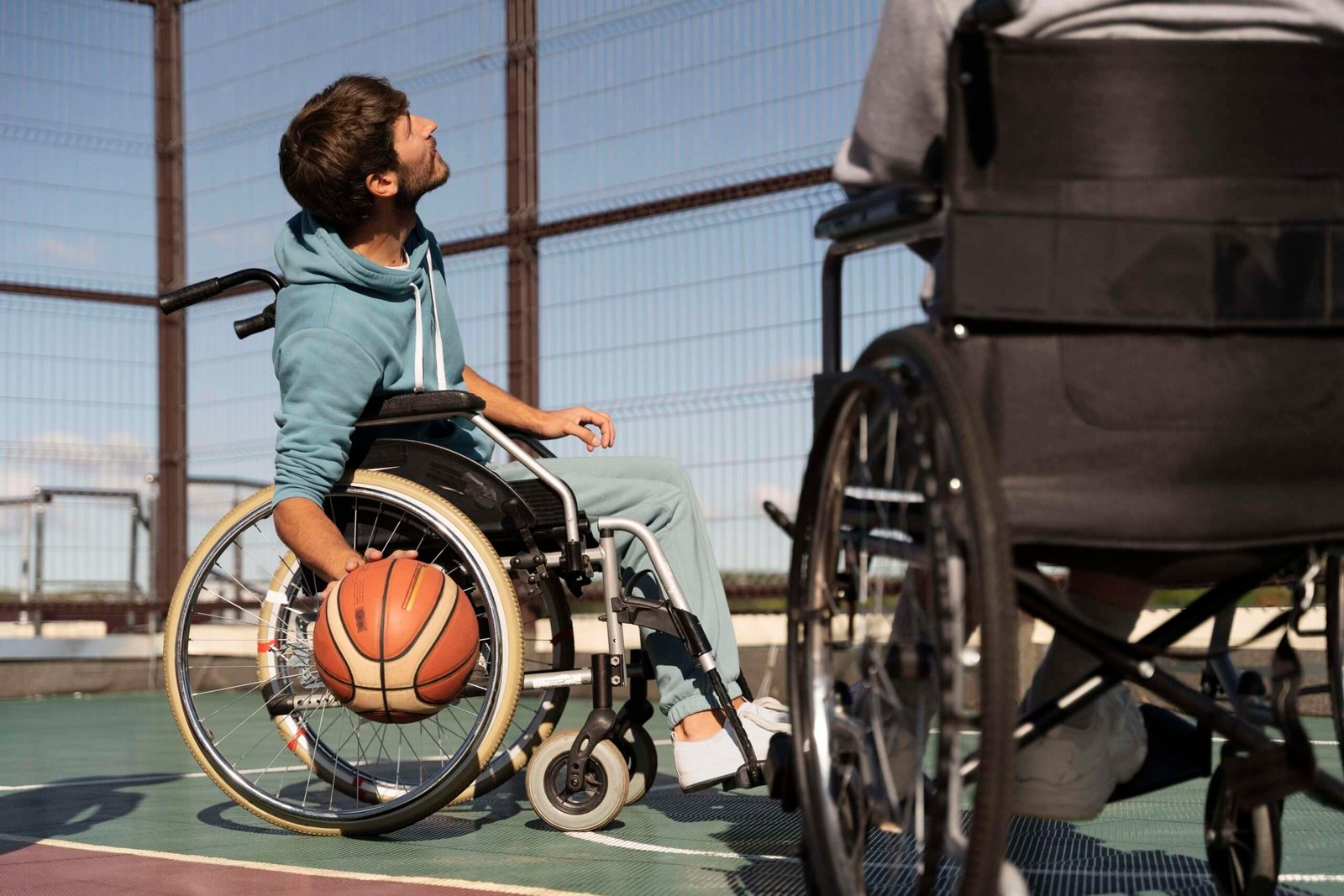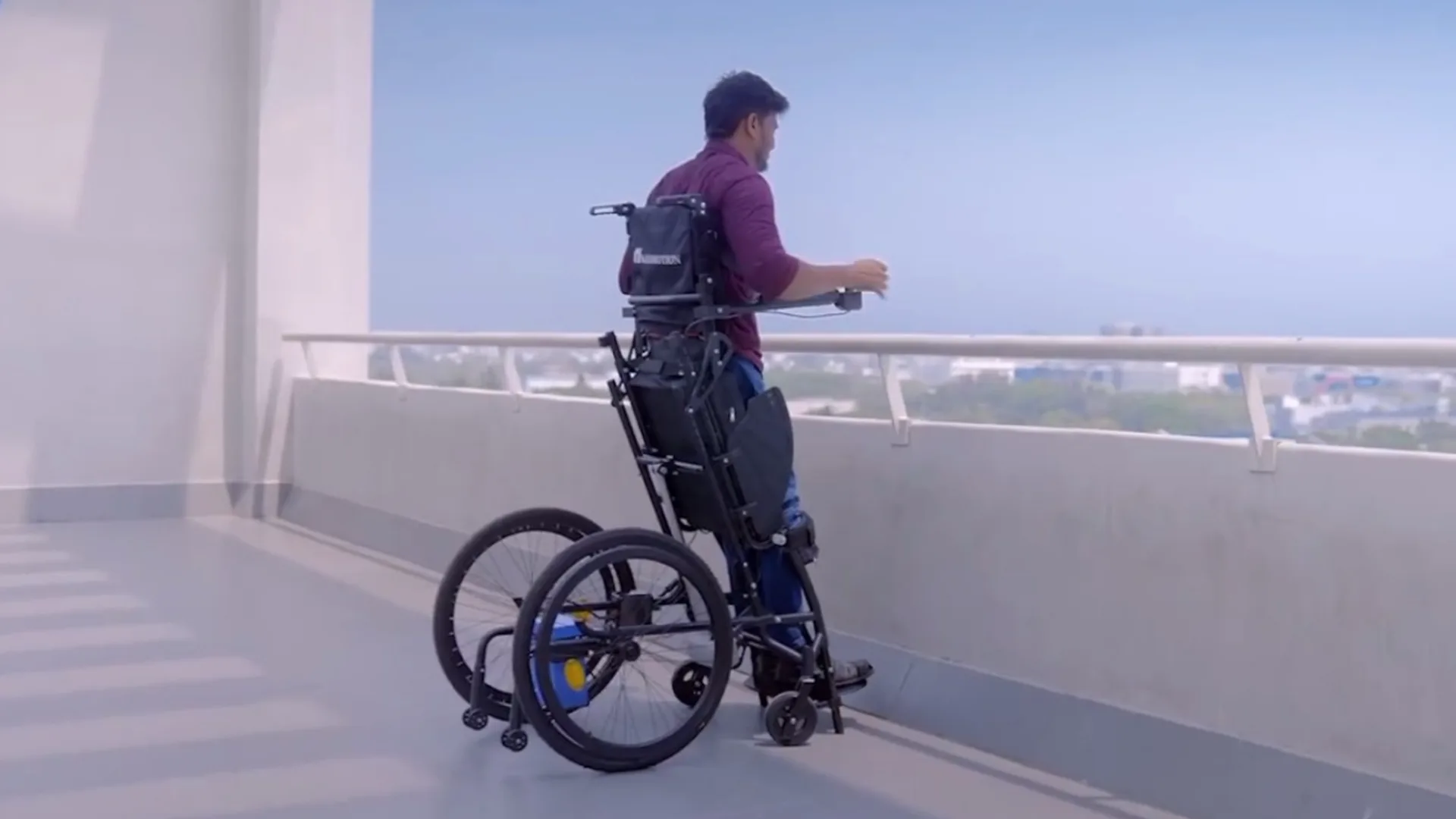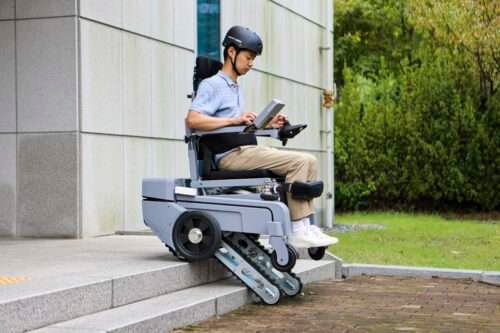Electric Wheelchair Technology In India
Electric wheelchairs have transformed the lives of people whose moving around is very difficult by giving them a lot more than mere movement. The electric wheelchairs provide a big boost in mobility as compared to conventional manual wheelchairs. Through motor propulsion, users can make their way through different types of terrain, inclines, and long distances smoothly. It enables them to participate in social activities fully, enjoy outdoor spaces, and stay active. Increased independence is one of the greatest benefits. Users can drive themselves, eliminating the need for help when moving from one place to another. Therefore, this independence helps individuals maintain their routines, pursue interests, and regain control over their lives.
The comfortability and accessibility of electric wheelchairs are enhanced. These features enable users to attain a position that provides maximum comfort while sitting using adjustable seating positions with cushioned seats fitted, as well as customizable features to make it suitable for each user’s tastes. Through elevated seating, inclusivity is also encouraged since this allows users to communicate with others at eye level.
Current State of Electric Wheelchair Technology in India
The electric wheelchair market in India has been expanding significantly due to technological breakthroughs, growing awareness, and increased mobility needs for the elderly and disabled. The next is a deep insight into the best electric wheelchair technologies in India today:
1. Technological Advancements
Electric wheelchairs in India have experienced significant technological enhancements, making them more user-friendly and effective. Contemporary features include:
- Lightweight and Foldable Designs: Many electric wheelchairs now come with lightweight frames and foldable designs, which make their transportation and storage much easier.
- Enhanced Battery Life: Improved battery technology means that users can travel longer distances before recharging the device again.
2. Affordability and Accessibility
While advanced electric wheelchairs are becoming more common, there remains a challenge of affordability for many consumers. Nonetheless, government initiatives and subsidies are gradually increasing the availability of these aids. Attempts are being made to reduce prices by manufacturing locally as well as increasing competition among suppliers.
3. Local Manufacturing and Innovation
Many Indian firms and ventures are penetrating the market for electric wheelchair in India, with specific attention to localized solutions. They include:
- Customization Options: electric wheelchairs that can be modified in terms of individual requirements, such as adjustable seats and unique controls.
- Adaptability to Different Terrains: Designs that can be used on Indian roads and terrains to ensure seamless mobility in different surroundings.
Overview of the existing market for electric wheelchairs in India
The use of electric wheelchairs in India has been growing rapidly. The following are some key points:
1. Market size and forecast
The Indian wheelchair market was valued at USD 162.58 million* in 2021 and is anticipated to reach USD 302.41* million* by 2028 with a CAGR of 9.5% during the forecast period.
2. Increasing Population of the Aged
The elderly population is growing as life expectancy rises across India. Conditions such as arthritis and musculoskeletal disorders demand the use of wheelchairs. By 2050, nearly one-fifth of India’s population will be aged sixty or more, underscoring the significance of catering to geriatric mobility needs.
3. Technological Developments
AI-based controls and improved comfort features make wheelchairs more user-friendly hence driving their demand.
4. Escalating Disability Rates
Support from governments via programs and funding for disabled individuals necessitates this business growth.
5. Sporting activities and awareness
The public acceptance of wheelchairs in disability sports helps build recognition for these devices among people.
6. Future Prospects
Demographic shifts, technological advancements, and increased awareness regarding mobility aids are likely to continue driving growth in this market.
Technological Advancements in Electric Wheelchairs
Major steps have been taken in the electric wheelchair sector in India, pushed by unrelenting innovation and the desire to make user experiences better. Here is a detailed look at some of the latest technological breakthroughs in electric wheelchairs:
1. Innovations Concerning Battery Technology
Today’s modern electric wheelchairs have batteries that are powered by lithium-ion which can be used for longer periods. This helps people move over long distances on a single charge, thus reducing the need for constant recharging and increasing autonomy. Modern batteries are designed to cope with diverse environments, hence guaranteeing dependable performance over timeframes. As such, they require fewer replacement frequencies because of improved durability, which reduces maintenance expenses on the users’ part.
2. Better Wheelchair Design
Currently, electric wheelchairs are made from materials like aluminum and carbon fiber, which are both lighter and more durable than before. The chairs therefore become easier to handle or transport without sacrificing strength or stability.
3. Integrating Smart Technology
To make it easier to maneuver, there are user-friendly controls such as joysticks and touchpads. Moreover, these can be adjusted to meet the specific requirements of each individual or user. Therefore, some of the best electric wheelchairs now have Bluetooth and Wi-Fi connectivity, enabling connections between them and smartphones and other devices. Dedicated applications offer functions like battery monitoring, route planning, and remote control.
4. Improved Safety Features
Modern electric wheelchairs come equipped with anti-tip mechanisms to avoid accidents by ensuring stability on any terrain. With these, the wheelchair will stay upright even when climbing slopes that are inclined or passing through uneven ground. Additionally, safety is improved by automatic braking systems, which activate if the presence of obstacles is detected. Such systems prevent accidents, therefore increasing users’ confidence whenever they find themselves in unfamiliar or crowded spaces.
Government policies and subsidies for wheelchair users
For the users of electric wheelchairs in India, the government has launched several policies and schemes, such as:
- Scheme for Implementation of the Rights of Persons with Disabilities Act, 2016 (SIPDA): This scheme provides financial assistance for various activities outlined in Persons with Disabilities (Equal Opportunities, Protection of Rights, and Full Participation)
- Assistance to Disabled Persons for Purchase/Fitting of Aids and Appliances (ADIP) Scheme: However, under this plan, free aid such as wheelchairs or tricycles is given to persons with a minimum of 40% disability and whose household income is below INR 15,000 (approximately USD 203) per month.
- Accessible India Campaign (Sugamya Bharat Abhiyan): This campaign was launched by the Department of Empowerment of Persons with Disabilities in order to promote accessibility everywhere.
- Unique Disability ID (UDID): From April 2023 onwards, people with disabilities will be required to provide their UDIDs as a condition for accessing benefits under 17 government schemes. However, some individuals with less than 40% disability may not be covered under these schemes.
Predictions for the Next Decade in electric wheelchair technology
1. Forward-thinking Control Mechanisms
Electric wheelchairs may use more straightforward control mechanisms. Innovations such as brain-computer interfaces (BCIs) or eye-tracking systems can enable users to easily move their chairs. Voice commands, gesture recognition, and sometimes mobile phone applications could be integrated into these chairs, enhancing the user experience and independence.
2. Intelligent Wheelchairs
Picture electric wheelchairs fitted with sensors, cameras, and communication. These “smart” seats would have the ability to adapt to their surroundings, avoid obstacles, and offer real-time feedback to their users. Anticipatory analytics could enhance routes for better management of uneven terrain and maintenance reminders based on usage patterns.
3. Lightweight Materials and Design
Progress in material science may result in lighter, stronger electric wheelchairs. Traditional steel frames may be replaced by carbon fiber, titanium, and other high-strength materials. Therefore, electric wheelchairs’ beauty could be enhanced by sleek ergonomic designs, making them look more attractive and portable.
How does Peaar Healthtech intend to satisfy the needs of users in the future?
PEAAR Healthtech is dedicated to transforming the electric wheelchair industry through customer-oriented innovations and technological advancements. Through weaving together ultramodern battery technologies, ergonomic configurations, smart connectivity, as well as heightened safety features, we aspire to provide unmatched mobility solutions that suit different users. We dream of a world where all those with immobility issues can easily access services, hence our efforts to improve accessibility, comfort, and independence. In the future, PEAAR Healthtech will maintain its pace in terms of innovation and ensure that our best electric wheelchairs go beyond the expectations of our clients by making everyday life more seamless and empowering.







